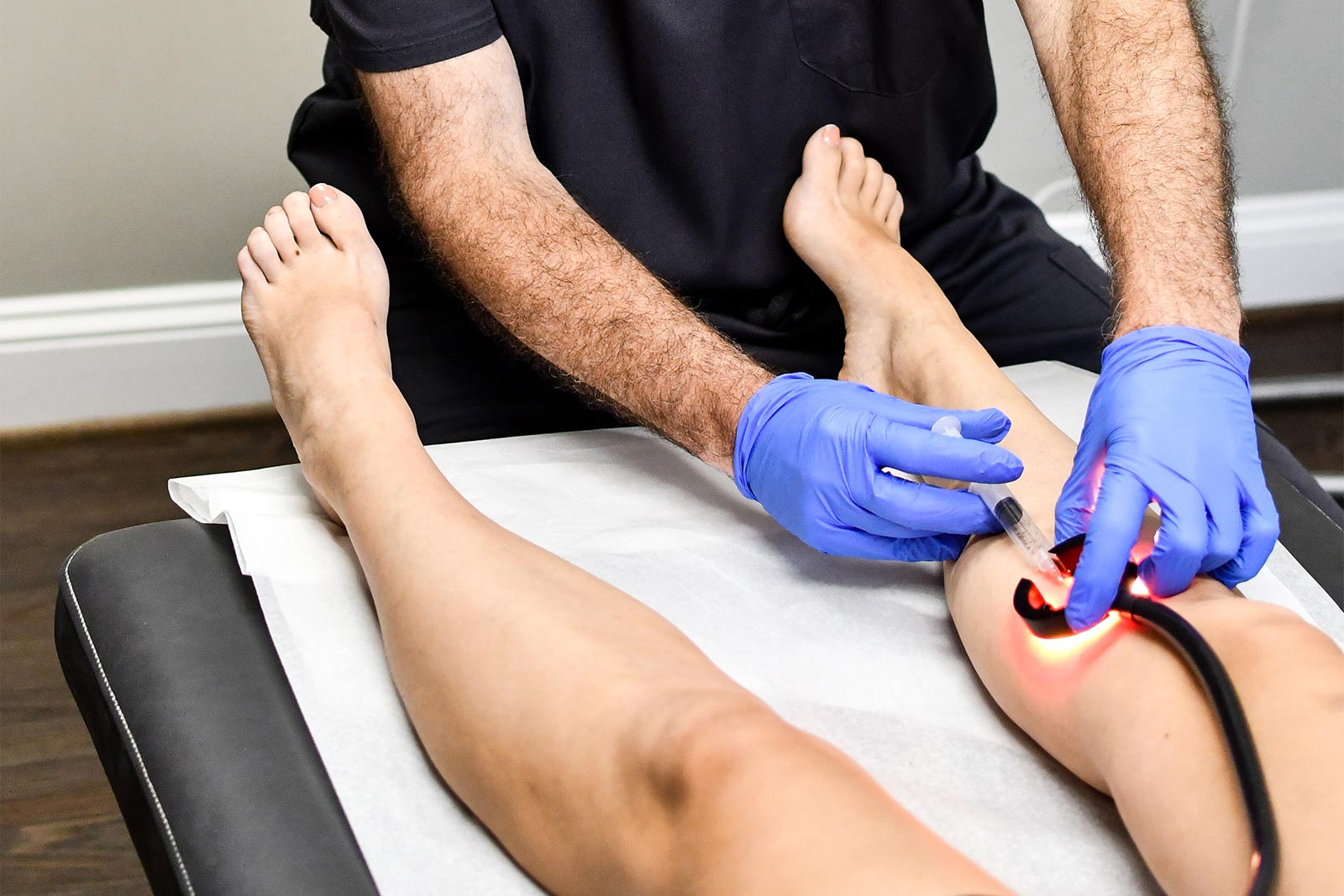Vein Treatments Phlebectomy

A phlebectomy, also called a microphlebectomy or ambulatory phlebectomy, is an outpatient procedure performed to remove spider and varicose veins through small, slit-like incisions in the skin. When varicose veins near the surface of the skin are too large to treat with sclerotherapy and too close to the skin and too tortuous (twisty) to treat with laser ablation, phlebectomy is the preferred treatment. Since veins are extremely collapsible, even the largest affected veins can often be removed through tiny incisions using the phlebectomy procedure. This minimally invasive treatment does not require sutures or general anesthesia and can easily be performed in the doctor’s office with minimal downtime. Phlebectomy involves less pain and fewer risks than traditional surgical treatment.
Reasons For Phlebectomy
Some patients seek treatment for their varicose veins for cosmetic purposes, while others are concerned about the potential risks of their damaged veins. Untreated veins can lead to pain, inflammation and discoloration. They can also affect the flow of oxygen-depleted blood between the lower legs and the heart. Phlebectomy treats symptomatic and asymptomatic veins and can relieve both cosmetic and medical concerns in one simple procedure. The single procedure aspect of phlebotomy is one of its main advantages and provides a very efficient means of permanent removal of larger veins. After these bulging veins have been removed, the venous blood will be re-routed to normal leg veins. Function will not be affected by removing the damaged veins, as there are many surrounding veins to take over. In fact, function will improve because there is no longer reflux (backwards flow) once the abnormal veins are removed.
Phlebectomy Procedure
The phlebectomy procedure is performed in the office with only local anesthesia (numbing medicine in the skin). This procedure takes about 30 minutes to perform. The doctor will first identify the veins to be treated to ensure precise removal and to help preserve the health of surrounding veins and tissue. Before beginning the surgery, the doctor will inject local anesthesia into the skin. Patients generally do not experience any discomfort during the procedure. Tiny incisions will be made in the targeted areas, and a surgical hook will be inserted to extract the damaged veins section by section. The incisions are very small and usually no stitches are required. Veins are very collapsible such that even large veins may be removed through the tiny incisions used in this technique. (Check out the before-and-after pictures on our website!) You will wear a compression stocking for a few days after surgery to help minimize swelling and discomfort.
Recovery From Phlebectomy
Some bruising, discomfort and swelling are to be expected after an phlebectomy. Swelling and pain can be minimized with compression stockings and over-the-counter pain medications, and are usually only needed for a few days. Patients will be able to walk and carry on with normal activities immediately after the phlebectomy procedure, though they will have to wear compression stockings for the first week. They can usually return to work the next day, although exercise and heavy lifting should be avoided for about one to two weeks.
The incisions from this procedure do not require sutures and are able to heal on their own, and are often barely visible after a few months. Some patients may experience mild skin pigmentation at the site of the varicose vein, but this usually goes away on its own after a short time. Most people see significant improvement from a phlebectomy since damaged veins have been completed removed (see the before-and-after photos on this site). Phlebectomy offers permanent, effective results without multiple procedures for most patients.


